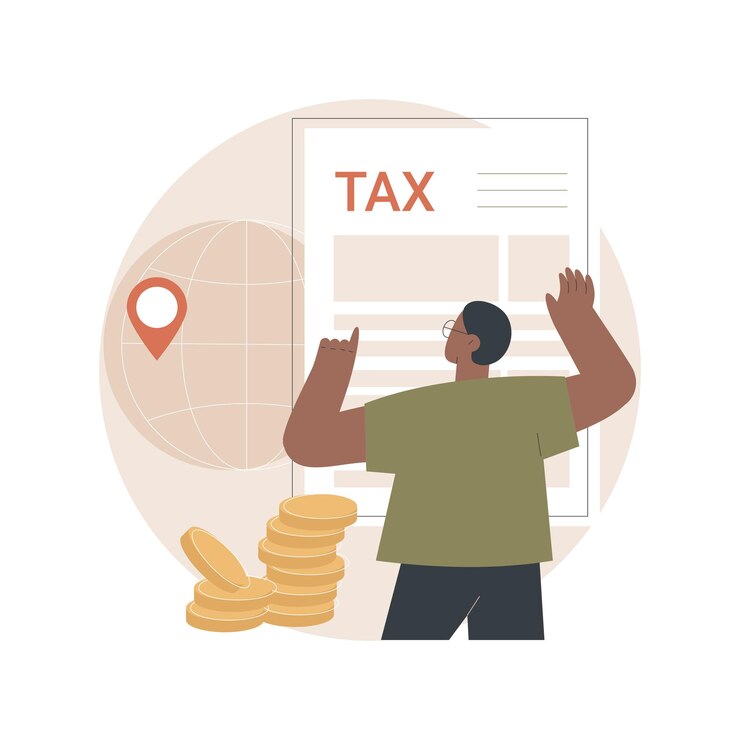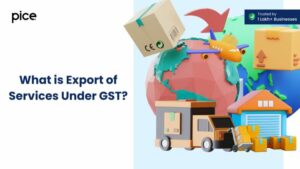How Does the Composition Scheme Under GST Benefit SME Businesses?
- 20 Sep 24
- 16 mins

How Does the Composition Scheme Under GST Benefit SME Businesses?
Key Takeaways
- Simplifies GST compliance with a fixed turnover rate payment.
- Eligibility is capped at Rs. 1.5 crore turnover, lower for special states and selected service providers.
- There is no interstate sales or input tax credit for scheme participants.
- Offers lower GST rates for different business categories.
- Simplified filing with quarterly and annual returns.
- Excludes e-commerce sales and non-taxable goods supply.
- Flexible opt-in and opt-out at the financial year's start.
The Goods and Services Tax (GST) Composition Scheme is a tax simplification measure for small and medium-sized enterprises (SMEs) in India. It is designed to reduce the burden of compliance for small businesses by allowing them to pay GST at a fixed rate of their turnover rather than the standard rate.
This scheme is optional and primarily aimed at reducing compliance costs and simplifying the tax filing process for small businesses.
GST Composition Scheme Rules
The Goods and Services Tax (GST) Composition Scheme is an initiative by the Indian government aimed at simplifying GST compliance for small and medium enterprises (SMEs).
It allows eligible businesses to pay GST at a fixed rate of their turnover, which is significantly lower than the regular rates. However, to avail of the benefits of the scheme, businesses must adhere to specific rules and regulations.

Key Rules of the GST Composition Scheme
Eligibility Criteria
- The scheme is available to manufacturers, traders, and restaurants that supply services.
- Only businesses with an annual turnover of up to Rs. 1.5 crore (Rs. 75 lakhs for special category states) are eligible to opt for the scheme. Recently, the scheme was extended to service providers and mixed suppliers with a turnover of up to Rs. 50 lakhs.
- Eligible taxpayers must apply for the scheme, which is optional.
Turnover Calculation
- The turnover limit for eligibility includes the aggregate turnover of all businesses registered under the same PAN (Permanent Account Number).
- Aggregate turnover includes taxable supplies, exempt supplies, exports, and inter-state supplies but excludes inward supplies under reverse charge and Central, State, Union Territory, and Integrated GST.
Restrictions
- Businesses opting for the composition scheme cannot engage in interstate outward supplies of goods or services.
- They are not allowed to supply non-taxable goods, such as alcohol for human consumption or narcotics.
- Composition taxpayers cannot make supplies through e-commerce platforms that are required to collect tax at source (TCS).
- They are not eligible to claim the input tax credit mechanism (ITC) on their purchases.
Tax Rates
- The GST rates under the scheme are significantly lower. For instance, manufacturers and traders pay a GST rate of 1% (0.5% CGST + 0.5% SGST), restaurants not serving alcohol for human consumption pay 5% (2.5% CGST + 2.5% SGST), and service providers pay 6% (3% CGST + 3% SGST).
Compliance Requirements
- Businesses enrolled in this scheme are required to file GST returns on a quarterly basis, unlike the monthly filings required for regular taxpayers.
- On each notice or signboard prominently displayed at their place of business and on each bill of supply they issue, they must mention "Composition Taxable Person."
- They are required to issue a bill of supply instead of a tax invoice, as they cannot charge GST from their customers.
- Annual return filing is mandatory under Form GSTR-4 by the 30th of April following the end of the financial year.
Opting In and Out
- Taxpayers can opt for this scheme at the beginning of a financial year. They need to file an application electronically in GST CMP-02 form before the start of the financial year for which they wish to opt into the scheme.
- To opt out of this scheme, taxpayers must file the GST CMP-04 Form.
Eligibility: Who Can Avail?

The Goods and Services Tax (GST) Composition Scheme is tailored for small and medium businesses in India, offering a simpler compliance regime and a reduced tax rate. However, not all businesses are eligible to avail of this scheme. Understanding the eligibility criteria is crucial for businesses considering opting into the scheme.
Here’s a breakdown of who can avail of this scheme:
Businesses Eligible for the GST Composition Scheme
- Small and Medium Enterprises (SMEs)
The scheme is primarily targeted at SMEs to reduce their compliance burden.
- Manufacturers, Traders, and Restaurants
Manufacturers of goods, traders, and restaurants not serving alcohol can opt for the composition scheme. It's designed to benefit these sectors by simplifying tax calculations and filings.
- Service Providers (With Limits)
Initially, the scheme was limited to manufacturers, traders, and restaurants. However, it has been extended to include service providers and mixed suppliers (those who supply both goods and services), with turnover threshold limits of up to Rs. 50 lakhs.
- Annual Turnover Threshold
To be eligible for the composition scheme, a business's annual turnover in the preceding financial year should not exceed Rs. 1.5 crore. This limit is reduced to Rs. 75 lakhs for special category states. It’s important to note that the business turnover threshold limit is subject to review and changes by the GST Council.
- Specific Exclusions
Certain businesses are explicitly excluded from availing of the GST Composition Scheme, regardless of their turnover. These include:
- Interstate Suppliers
Businesses engaged in interstate supply of goods or services are not eligible for the composition scheme, as it aims to simplify tax compliance primarily for intra-state transactions.
- E-commerce Sellers
Businesses that sell goods through e-commerce platforms that are required to collect tax at source (TCS) are ineligible for the composition scheme.
- Non-taxable and Exempt Goods Suppliers
Suppliers of non-taxable goods, such as alcohol for human consumption, and those dealing exclusively in goods or services that are exempt from GST, cannot opt for the composition scheme.
- Service Providers (Beyond the Specified Limit)
Service providers, except for restaurants, whose turnover exceeds the specified limit of Rs. 50 lakhs, are ineligible for the scheme.
- Manufacturers of Notified Goods
Manufacturers of certain goods that have been specifically notified by the GST Council are also not eligible for the composition scheme.
Turnover Limit for Composition Scheme

The GST Composition Scheme is designed for small and medium enterprises (SMEs) to reduce the burden of compliance by allowing them to pay GST at a reduced rate based on their turnover rather than going through the full tax calculation process.
Having knowledge of the turnover limit is essential for businesses considering this option.
Current Turnover Limit for the GST Composition Scheme.
As of my last update, the turnover limits for eligibility under the GST Composition Scheme are as follows:
- For Manufacturers and Traders
The scheme is available to manufacturers and traders with an annual turnover of up to Rs. 1.5 crore in the preceding financial year.
This limit helps target the scheme towards small and medium-sized businesses.
- For Special Category States
For certain special category states, the turnover limit is set at Rs. 75 lakhs. Special category states typically include northeastern states, Himachal Pradesh, Uttarakhand, and Jammu & Kashmir. It's important to check the latest updates, as these categories can change based on GST Council decisions.
- For Service Providers
The GST Composition Scheme was extended to service providers and mixed suppliers (those supplying both goods and services), with a turnover limit set at Rs. 50 lakhs in the preceding financial year. This extension aimed to bring more small service providers under the ambit of the composition scheme, allowing them to benefit from simplified compliance and reduced tax rates.
Key Considerations Regarding the Turnover Limit
- Aggregate Turnover: The turnover limit considers the aggregate turnover, which includes the total value of all taxable supplies, exempt supplies, exports of goods and/or services, and inter-state supplies of a person having the same PAN, but excludes central tax, state tax, union territory tax, integrated tax, and cess.
- Notification and Changes: The GST Council may revise the turnover limits based on economic factors and policy goals. Businesses should stay updated with the latest notifications from the GST Council or the Central Board of Indirect Taxes and Customs (CBIC) to ensure compliance and eligibility.
- Opting for the Scheme: Businesses that meet the turnover criteria and wish to opt for the composition scheme must file an application at the beginning of the financial year for which they want to opt into the scheme.
Benefits of Opting for Composition Scheme
Opting for the GST Composition Scheme offers several benefits for eligible small and medium businesses:
- Reduced Tax Liability: Businesses pay GST at a significantly lower fixed rate on their turnover, reducing their overall tax burden.
- Simplified Compliance: The scheme simplifies the tax filing process, requiring fewer compliance filings (quarterly returns instead of monthly returns).
- Lower Compliance Costs: With simplified compliance and accounting requirements, businesses incur lower costs in managing GST filings and record-keeping.
- Increased Liquidity: Lower tax rates and simplified procedures improve cash flow and liquidity for small businesses, supporting their operational needs.
- Ease of Doing Business: The scheme reduces the complexity of GST rules for small businesses, making it easier for them to focus on their core operations.
Drawbacks of the Composition Scheme
However, not all that glitters is gold. Opting out of the regular GST regime means no input tax credit, and restrictions on interstate sales might feel like sailing against the wind for some and many more reasons mentioned below.
| Drawback | Explanation |
|---|---|
| Limited Territory for Business Operations | Businesses cannot engage in interstate sales or exports, limiting their market reach. |
| No Input Tax Credit (ITC) | Under the composition scheme, taxpayers cannot claim credit for input on their purchases. |
| Restrictions on Customer Base | Ineligible to supply goods through e-commerce platforms, limiting online sales opportunities. |
| Inapplicability to Service Providers | Only select service providers are eligible, excluding many from the scheme. |
| Tax Rate on Total Turnover | Tax is paid on total turnover without deducting expenses, which could lead to higher taxes for businesses with low profit margins. |
| Compliance upon Withdrawal | Transitioning back to the regular GST regime requires adjustment and might involve complex compliance requirements. |
Tax Rates Under the Scheme
The tax rates under this scheme are like calm seas—lower and more predictable. They vary by business type, offering a simpler calculation method.

Under the GST Composition Scheme, eligible small and medium-sized businesses can benefit from significantly reduced GST rates compared to the regular GST rates. These rates are designed to simplify tax compliance and reduce the tax burden for smaller businesses.
The tax rates applicable under the GST Composition Scheme, as of the last update, are as follows:
- Manufacturers and Traders of Goods: 1% GST (0.5% CGST + 0.5% SGST) on the turnover of taxable supplies. This rate is applicable to manufacturers and traders of goods.
- Restaurants Not Serving Alcohol: 5% GST (2.5% CGST + 2.5% SGST) on the turnover. This rate applies to restaurants that do not serve alcoholic beverages for human consumption.
- Service Providers and Mixed Suppliers: 6% GST (3% CGST + 3% SGST) on the turnover. This category includes service providers and those who supply both goods and services, with a recent extension allowing such businesses to opt for the composition scheme if their turnover does not exceed Rs. 50 lakhs.
Filing Composite GST Returns: A Simplified Process
Filing returns under the composition scheme is akin to navigating calm waters. It's simpler, requires fewer details, and is less time-consuming.
Step 1: Opt-In for Composition Scheme: Businesses must first opt into the composition scheme by filing Form CMP-02, indicating their choice to be taxed under this scheme.
Step 2: Quarterly Return Filing: Instead of monthly returns, composition dealers are required to file a simplified quarterly return using the GSTR-4 form, summarizing their total sales and the GST paid at the composition rate.
Step 3: Annual Return Submission: In addition to quarterly returns, composition dealers must file an annual return using Form GSTR-9A, providing a comprehensive summary of their yearly sales and taxes paid.
How to Apply for the GST Composition Scheme
Applying for the GST Composition Scheme is a straightforward process designed to facilitate small businesses in opting for a simpler tax compliance regime. Here are the steps involved in applying for the scheme:
- Log into the GST Portal
Businesses need to access the GST portal (www.gst.gov.in) using their valid credentials (GSTIN, username, and password).
- Navigate to the Application Form
Once logged in, navigate to the 'Services' menu, select 'Registration', and then choose 'Application to Opt for Composition Levy'.
- Fill in the Details
Complete the form (GST CMP-02) by providing the required details, including the sector of business (manufacturing, trading, and services) and the financial year from which the composition scheme is sought.
- Submit the Form
After filling in the details, verify the declaration and submit the form. A confirmation acknowledgment will be generated upon successful submission.
- File Form GST ITC-03 (If Required)
Businesses already registered under GST and switching to the composition scheme must file Form GST ITC-03 within 60 days of commencement. This form is used to declare the details of the inputs held in stock, inputs contained in semi-finished or finished goods held in stock, and capital goods for which input tax credit has been availed, on the date preceding the date of opting for the composition scheme.
- Compliance with Composition Rules
Upon opting for the composition scheme, ensure compliance with all the scheme's rules, including restrictions on interstate supplies, issuance of a bill of supply instead of a tax invoice, and the payment of tax at prescribed rates without availing input tax credit.
- Annual Renewal
It's important to note that opting for the composition scheme is not a one-time process. Businesses need to assess their eligibility and opt-in for the scheme at the beginning of each financial year if they continue to meet the eligibility criteria.
Returns to be Filed by a Composition Dealer
A Composition Dealer under the GST regime is required to adhere to a simplified compliance schedule compared to regular taxpayers. Here are the returns that a composition dealer needs to submit:
- GST CMP-08
Frequency: Quarterly
Purpose: This form serves as a statement of self-assessed tax for the quarter. Composition dealers must pay the tax due by the 18th of the month following the quarter.
- GSTR-4
Frequency: Annually
Purpose: This annual return summarizes the turnover details, tax paid, and other relevant information for the entire financial year. It must be filed by the 30th of April, following the end of the financial year.
Conclusion
The GST Composition Scheme offers a streamlined approach for small and medium-sized enterprises (SMEs) in India, simplifying tax compliance and reducing tax rates.
While it presents advantages like simplified filings and lower compliance costs, businesses must weigh these against restrictions such as no input tax credit and limitations on interstate sales.
Deciding to opt for the scheme requires careful consideration of its impact on business operations and growth potential. Ultimately, the scheme can be beneficial for SMEs that operate predominantly within their state and can manage without input tax credits, making it a practical choice for those looking to minimize administrative burdens associated with GST compliance.
💡Take the first step towards making all your business payments efficiently with a credit card. Request a demo and discover how PICE can manage all your business payments, rent, vendors, and GST from a single dashboard.
 By
By 


















